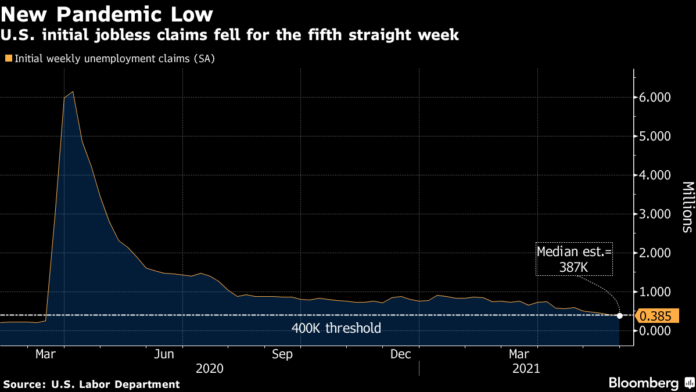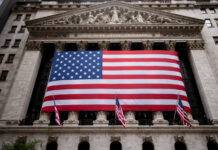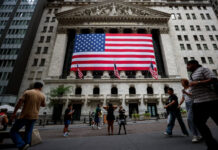
U.S. equities pared back losses on Thursday as investors digested a raft of economic data and a report President Joe Biden may be open to a lower corporate tax rate than 28%.
The S&P 500 and Nasdaq 100 eased declines after the Washington Post reported the Biden administration may instead back a 15% corporate tax floor to help win Republican support for an infrastructure package. Previously stocks were lower on concerns the Federal Reserve may withdraw its support sooner than expected. An ADP report showed payrolls at U.S. firms rose by the most in nearly a year, while additional figures on the economic health of the services sector also rose to the highest on record.
The dollar strengthened, 10-year Treasury yields rose, and gold fell. Meanwhile, the rally in so-called meme stocks including AMC Entertainment Holdings Inc. began to fade.
With U.S. equities locked in a tight range for the past month, investors are on the lookout for any signs that the Fed might start to taper its asset purchases. While Fed officials have mainly stuck to the message that stimulus will remain in place, inflation is perking up, with global food prices surging to the highest in almost a decade. All eyes will next be on Friday’s jobs report after separate data Thursday indicated strength was afoot. U.S. jobless claims dipped below 400,000 for the first time during the pandemic last week.
“With seemingly all systems go on the jobs front, the economy is flashing some very real signs that this isn’t just a comeback — expansion mode could be on the horizon,” said Mike Loewengart, managing director of investment strategy at E*Trade Financial. “So what does that translate to? Likely more pressure on the Fed to make a move — perhaps sooner than many thought from the outset.”
The stock declines follow shares in both Europe and Asia lower on the back of mounting geopolitical tensions. Russia said it would eliminate the dollar from its National Wellbeing Fund to reduce exposure to U.S. assets. Meanwhile, the Biden administration is set to amend an investment ban on companies linked to the Chinese military.
“The summer of uncertainty is on full display,” Dennis DeBusschere, head of portfolio strategy at Evercore ISI, wrote in a note. “10-year yields remain anchored and there is pressure on the USD, but leading indicators are strong, credit conditions are easy and market volatility remains low. That backdrop favors risk assets.”
These are some of the main moves in markets:
Stocks
- The S&P 500 fell 0.1%, more than any closing loss since May 25 as of 11:10 a.m. New York time
- The Nasdaq 100 fell 0.6%, more than any closing loss since May 21
- The Dow Jones Industrial Average rose 0.1%, climbing for the sixth straight day, the longest winning streak since March 15
- The Stoxx Europe 600 was little changed
- The MSCI World index fell 0.3%, more than any closing loss since May 19
Currencies
- The Bloomberg Dollar Spot Index rose 0.6%, more than any closing gain since May 12
- The euro slipped 0.6%, more than any closing loss since May 12
- The British pound fell 0.4% to $1.4116
- The Japanese yen fell 0.6% to 110.17 per dollar
Bonds
- The yield on 10-year Treasuries advanced three basis points to 1.61%
- Germany’s 10-year yield advanced one basis point to -0.18%
- Britain’s 10-year yield advanced three basis points to 0.83%
Commodities
- West Texas Intermediate crude rose 0.2% to $69 a barrel
- Gold futures fell 1.9%, the most since March 31

















